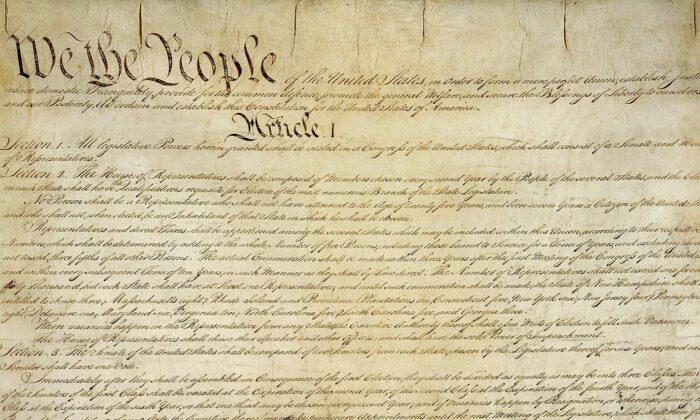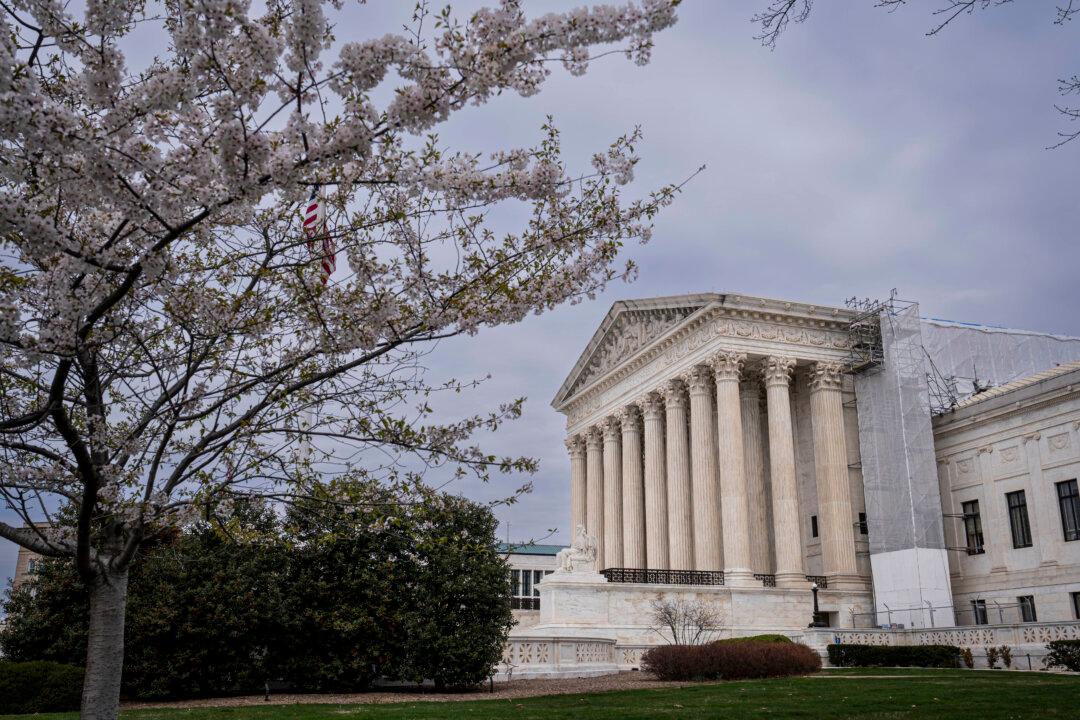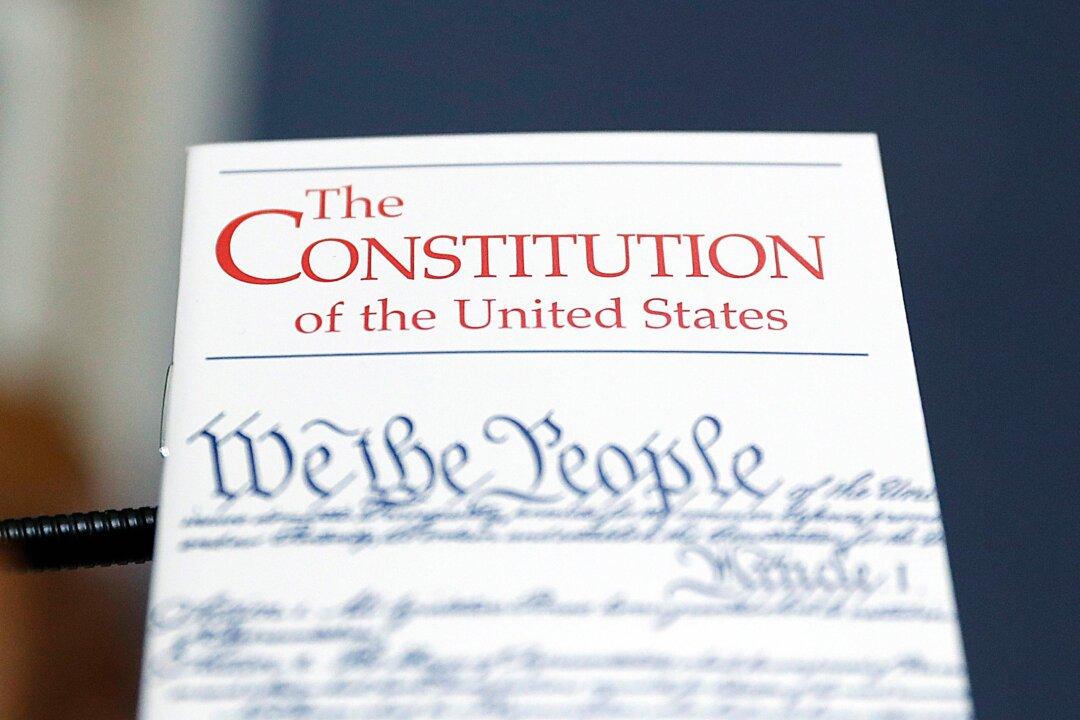Almost immediately upon taking office, President Joe Biden signed a series of executive orders wiping away the progress of the Trump era and resurrecting some of the worst abuses of the Obama era. In addition, he proposed massive new spending—and more national debt—to be added to the extravagant expenditures of the past few decades.
For more than 80 years, Americans who love their country have been fighting a defensive political battle to preserve the values and traditions that made our country great. But we have suffered one defeat after another. Even the incremental successes of the Reagan and Trump administrations have been wiped away in the “progressive” tide, like sandcastles on the seashore.
That’s accurate as far as it goes. But here’s the rest: If we do happen to get possession of the ball, we are allowed one down while the other side gets six.
That’s why in laying out agenda items in this series, I have limited myself to four that state legislatures can accomplish alone, thereby wiring around Congress. Most state lawmakers remain receptive to traditional, productive Americans in a way that Congress is not.
This essay outlines the fourth, and most important, agenda item. This is to enshrine corrective reforms in the U.S. Constitution. Experience shows that constitutional amendments have lasting power that other restraints—including laws and provisions in the original Constitution—don’t possess.
The American Founders weren’t superhuman, but they were very wise. They understood that the day might come when the federal government exceeded and abused its powers and the electoral system had failed to remedy the problems. So they inserted an additional remedy in the Constitution: the amendment process.
We usually think of constitutional amendments as responses to changed conditions. But the founding generation recognized that we can use amendments to cure constitutional drafting defects, resolve constitutional disputes, overrule bad Supreme Court decisions, and restrain federal power.
And the founding generation did more than recognize this; they acted on it.
In 1791, they adopted the First through Eighth Amendments of the Bill of Rights. The goal was to prevent abuses that might arise in the otherwise-lawful use of federal powers. At the same time, they added the Ninth and 10th Amendments to clarify limits on federal authority. In early 1795, they ratified the 11th Amendment to reverse an overreaching Supreme Court decision. Less than a decade later, they added the 12th Amendment to correct a constitutional drafting issue.
All of those amendments have had a major historical impact. Today, all but the Ninth retain at least some force.
In subsequent years, Americans have used the constitutional amendment process to institutionalize other reforms: abolishing slavery, protecting minorities from state oppression, ensuring that women can vote, and imposing term limits on the president.
Each of these amendments was ratified by the requisite three-quarters of the states. Before they could be ratified, however, they had to be proposed. In each case, Congress proposed them. But that was back when the necessary two-thirds of each house of Congress still had some sense of honor.
Today, however, Congress is abusive. It revels in its power. And as an entity, it’s mendacious: Despite repeated promises over many years, Congress still refuses to propose amendments favored by towering majorities of the American people. These include amendments requiring a balanced budget except in genuine emergencies, imposing term limits on members of Congress and on the Supreme Court, and curbing undemocratic and unfair regulations.
In the 1970s, it appeared that the states might force a convention to reverse liberal-activist Supreme Court decisions on a wide range of subjects. (The most famous is the abortion case of Roe v. Wade.) Liberal establishment figures—academics, politicians, “journalists,” and others—were determined to prevent the American people from overriding the court. So they decided to frighten people away from the convention route by publicizing scare stories.
They claimed, for example, that a convention of states would be almost unprecedented and that its procedures and composition were unknown. They simultaneously argued both that it would be an uncontrollable “constitutional convention” and that Congress could control it.
Today, the campaign continues, largely carried on by groups funded by progressive financier George Soros. Left-wing professors, none of whom has ever published any scholarly research on the subject, work with these groups. They use their unique access to the mainstream media to publicize their disinformation. A handful of naïve conservatives provide them political “cover” on the right.
In 2009, I started researching the Constitution’s provision for a “convention for proposing amendments.” This was part of my regular academic duties. I received no grants or compensation for my findings, other than my regular academic salary. That’s how I learned that the claims in the disinformation campaign were false.
Since I began publishing my research, more state lawmakers have come to understand why we need a convention. Indeed, a majority of state legislatures have now adopted “applications” (resolutions) to force Congress to call one. Resolutions of this kind need not be signed by the governor.
But once ratified, these amendments can’t be reversed by Joe Biden, Congress, or federal bureaucrats. As explained above, amendments historically have very long life expectancies, longer even than the original Constitution itself.
This is a step we can encourage state lawmakers to take and that no one in the federal government can block. By using the Constitution’s convention procedure, we can enact the reforms necessary to save the country—and we can make them permanent.






Friends Read Free